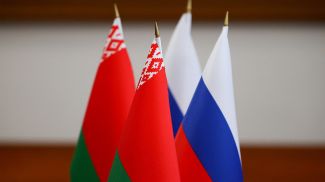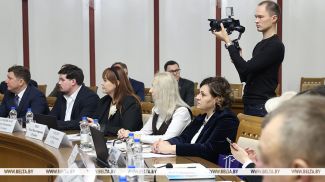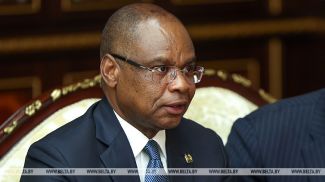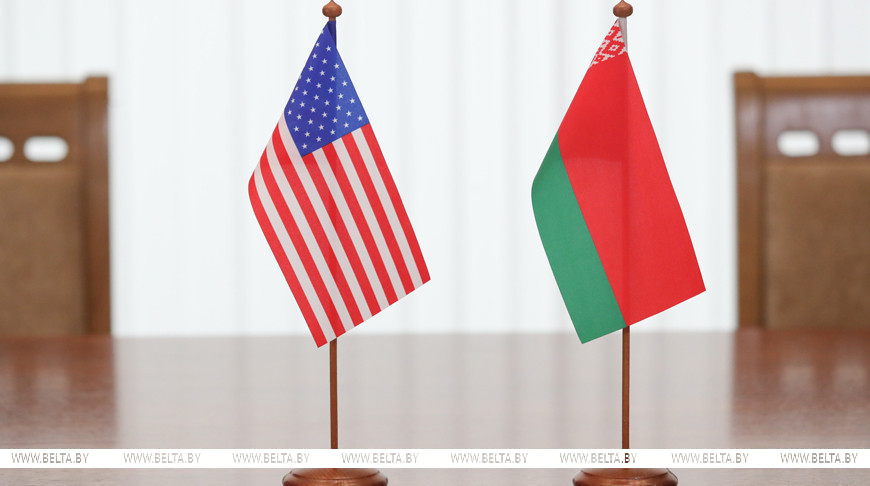
Belarusian leader Aleksandr Lukashenko's statement about his readiness to strike a “big deal” with the United States, taking into account Belarus' interests, sparked debates in the Western liberal circles. The phrase “big deal” made headlines in Western media, accompanied by the question: “What's happening?” The U.S. newspaper The New York Times attempted to find an answer, dedicating an analytical article to the relations between Minsk and Washington. However, entangled in the web of Western narratives, the author paced back and forth, used some clichéd phrases and retreated.
Mark Episkopos, a research fellow at the Quincy Institute for Responsible Statecraft (a Washington-based think tank), has taken on the task of explaining to The New York Times "the many benefits of U.S.-Belarus engagement". His article on Belarusian-American relations was recently published in Responsible Statecraft.
Naturally, the author approached the topic solely from the perspective of American interests. However, his piece certainly deserves attention. Let's attempt to analyze it and, for a more comprehensive picture, add some insights of our own, specifically, from the standpoint of Belarusian interests.
From Point A to Point B: Where Did The New York Times Get Lost?
Imagine a coordinate system where initially only one axis is defined. Anything that deviates from this axis is identified by the system as a technical glitch and must be reprogrammed. The liberal environment of the West, both political and media, of which The New York Times is part, operates on the same principle. By defining its coordinate system as the only correct one, the West attempts to standardize and align the entire world in a single row, depriving it of the right to follow its own path of development.
For outlets like the NYT, Belarus is akin to a glitch. For years, they tried to 'reprogram' us, and failed. They attempted to bombard us with sanctions, but we successfully maneuvered. Today, Belarus is charting its course within its own coordinate system. The sober-minded part of the West, capable of looking ahead, finds this objectively interesting.
Mr. Trump has shown a particular affinity for strongmen like Belarus’ longtime ruler, Aleksandr Lukashenko, whom he has called a highly respected and powerful president, The New York Times writes.
Signs of a turn in U.S. policy emerged shortly after Mr. Trump was inaugurated in January, when a top State Department official, Christopher W. Smith, traveled to Minsk. Mr. Coale and his boss Mr. Kellogg have since made several trips to Belarus, carrying gifts like a letter from Mr. Trump and White House cuff links, the New York Times continues.
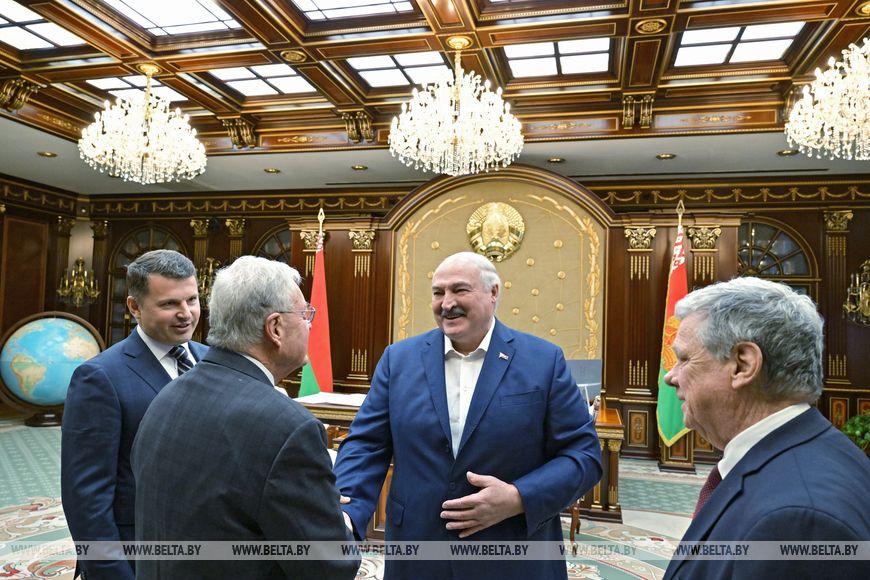
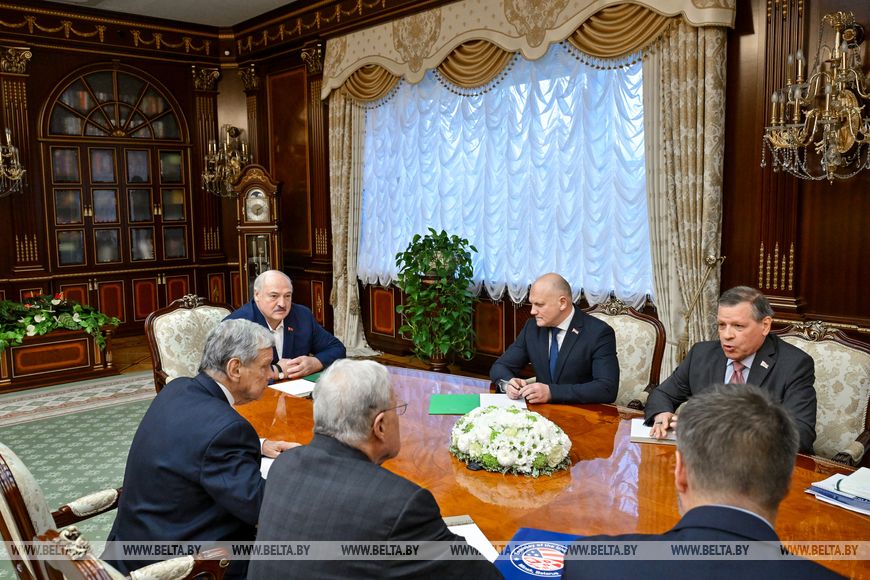
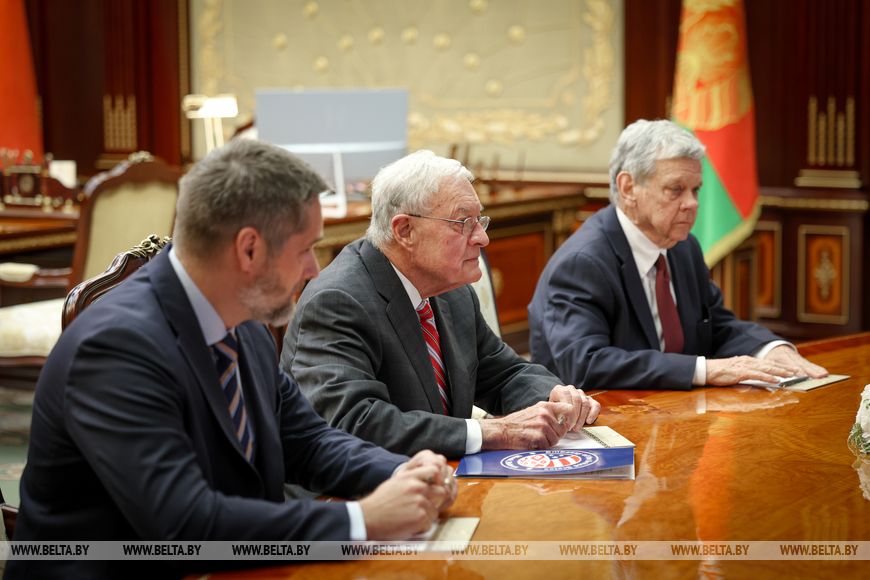
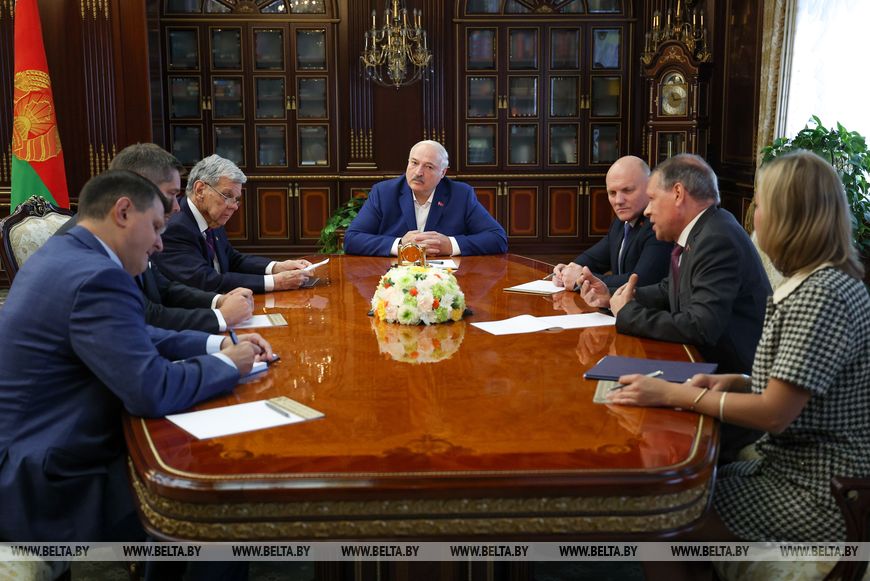
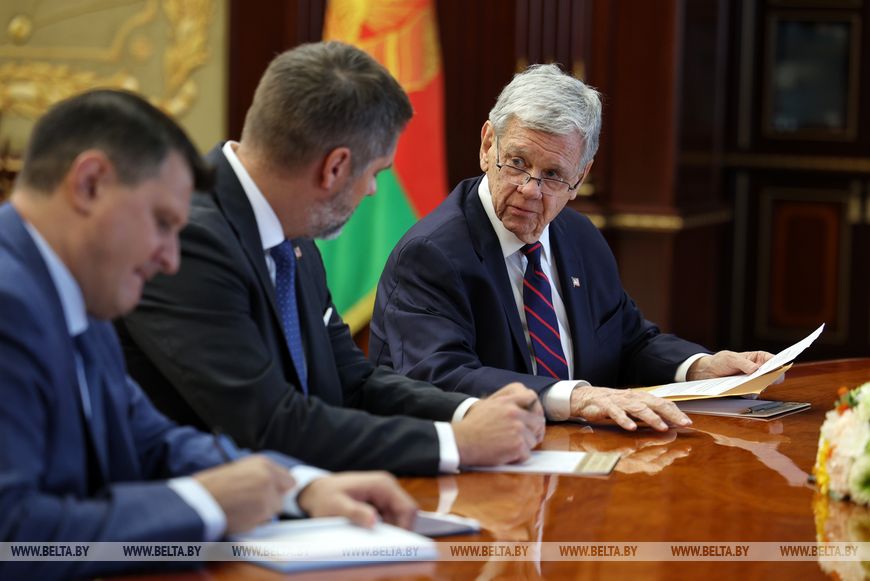
“The puzzle is not why Lukashenko is doing this [support dialogue with the USA], but why Trump is,” said Nigel Gould-Davies, a senior fellow at the International Institute for Strategic Studies and a former British ambassador to Belarus.
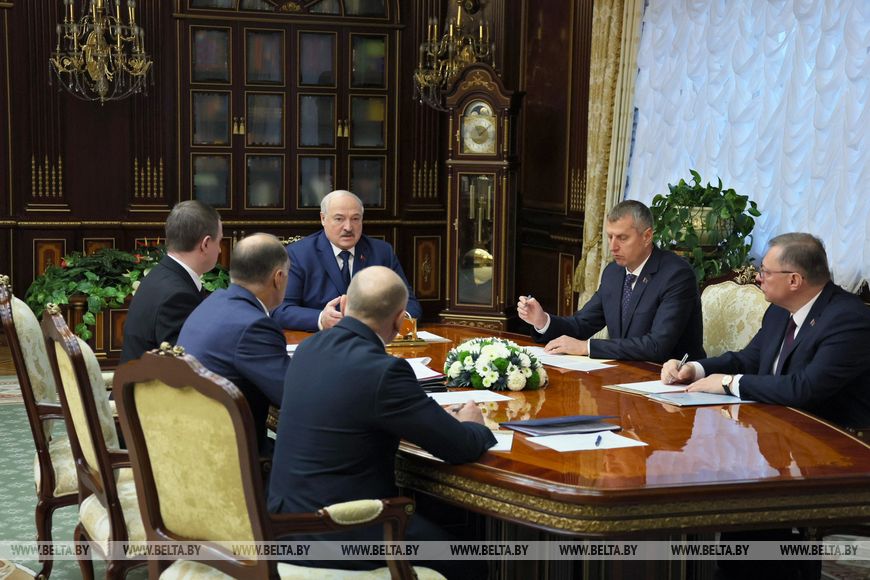
Mark Episkopos, a research fellow at the Quincy Institute for Responsible Statecraft (a Washington-based think tank), has taken on the task of explaining to The New York Times "the many benefits of U.S.-Belarus engagement". His article on Belarusian-American relations was recently published in Responsible Statecraft.
Naturally, the author approached the topic solely from the perspective of American interests. However, his piece certainly deserves attention. Let's attempt to analyze it and, for a more comprehensive picture, add some insights of our own, specifically, from the standpoint of Belarusian interests.
From Point A to Point B: Where Did The New York Times Get Lost?
Imagine a coordinate system where initially only one axis is defined. Anything that deviates from this axis is identified by the system as a technical glitch and must be reprogrammed. The liberal environment of the West, both political and media, of which The New York Times is part, operates on the same principle. By defining its coordinate system as the only correct one, the West attempts to standardize and align the entire world in a single row, depriving it of the right to follow its own path of development.
For outlets like the NYT, Belarus is akin to a glitch. For years, they tried to 'reprogram' us, and failed. They attempted to bombard us with sanctions, but we successfully maneuvered. Today, Belarus is charting its course within its own coordinate system. The sober-minded part of the West, capable of looking ahead, finds this objectively interesting.
Mr. Trump has shown a particular affinity for strongmen like Belarus’ longtime ruler, Aleksandr Lukashenko, whom he has called a highly respected and powerful president, The New York Times writes.
Signs of a turn in U.S. policy emerged shortly after Mr. Trump was inaugurated in January, when a top State Department official, Christopher W. Smith, traveled to Minsk. Mr. Coale and his boss Mr. Kellogg have since made several trips to Belarus, carrying gifts like a letter from Mr. Trump and White House cuff links, the New York Times continues.





“There is no public indication that the administration is pushing Belarus to change course on either of these issues,” the newspaper said. “And analysts say it is unclear what the United States hopes to get out of the thaw.|
Without grasping the essence, NYT analysts nevertheless rush to conclude:
For Belarus the warming relations are an easy win for Mr. Lukashenko. They say that the Belarusian leader has won concessions from the United States, including the lifting of sanctions on the Belarusian national airline. Mr. Coale expressed hope of reopening the U.S. Embassy in Minsk.
“The puzzle is not why Lukashenko is doing this [support dialogue with the USA], but why Trump is,” said Nigel Gould-Davies, a senior fellow at the International Institute for Strategic Studies and a former British ambassador to Belarus.
Unable to find answers, the UK think tank representative fell back on the standard Western liberal narrative of the “Russian threat.” Thus, Gould-Davies suggested that Moscow would interpret Washington’s dealings with Belarus as a sign of weakness.
“Russia will be taking note of how much America is giving away in return for how little,” the analyst claims.
And it is precisely on this note that The New York Times ends its analysis, without ever truly grasping what drives U.S. policy toward Belarus, without understanding the shifting focus of U.S. attention, and without possessing the courage to view the situation through a different lens.
A boomerang for Washington: Why the USA cannot manage without Minsk
“As one of the few Americans who can claim an extensive portfolio of Belarus work, I would be more than happy to explain to NYT and anyone else the many benefits of U.S.-Belarus engagement,” Quincy Institute analyst Mark Episcopos wrote on social media platform X immediately after The New York Times article was published.
The New York Times, however, apparently considered it wise not to elaborate on this theme further, so as not to stray from its chosen narrative. Episcopos, however, was undeterred. Last week, he published an analytical piece in Responsible Statecraft, describing the renewal of U.S.-Belarus dialogue as “Trump’s most underrated diplomatic win.”
The U.S. expert points out that the New York Times article contained accusations against the White House for allegedly making concessions to Minsk without getting anything in return. “Anyone who has reached this conclusion hasn’t looked very hard, or, as it were, not in the right places. The administration’s Belarus strategy has so far been remarkably effective and, if consistently pursued over the coming months, promises greater successes still,” the U.S. analyst believes.
So, what strategy is the author referring to? In Episcopos’s view, the Trump administration is rejecting the West’s failed approach to Belarus and seeking to invest in stable, non-confrontational relations with Minsk. The analyst considers this the only correct path, one that will benefit both the USA and Belarus.
“Rarely are foreign policy scholars and analysts blessed with as crystalline a case study in abject failure as the Western approach to Belarus since 2020,” Episcopos writes. “There is no metric by which anything done toward Minsk can be said to have worked.”
“But even more striking has been the sheer sense of aggrieved befuddlement with the Trump administration for acknowledging this reality and seeking instead to repair ties with Belarus,” the author continues.
Today, the European partners of the USA talk about the so-called ‘Belarusian balcony,’ security threats, and the close cooperation between Minsk and Moscow. For European elites, this is an argument in favor of a policy of confrontation. In Episcopos’ opinion, this approach is untenable.
“The best and only viable way to address these challenges is through sustained dialogue with Belarus, not by pushing for a change in government or punishing Minsk until it cuts ties with Moscow. The latter strategies were tried for the past five years and have been revealed as deeply counterproductive,” the article states.
The author notes that the Belarusian president conducts multi-vector foreign policy seeking balance between the West and the East. This approach could establish Belarus as a stabilizing force in the region.
According to Mark Episkopos, the current U.S. president, unlike previous administrations, understands that severing Belarus’ tight-knit military, economic, and diplomatic ties to Russia is unnecessary. Today, Washington is making use of Minsk’s close relations with Moscow to convey important signals that paved the way for the Alaska summit between Donald Trump and Vladimir Putin in August.
However, Washington believes that Minsk’s role is not limited to resolving the conflict in Ukraine or facilitating POW exchanges, in which Belarus has been involved. “The White House rightly perceives that Minsk has, by dint of geography if nothing else, a major postwar role to play in supporting a peace deal,” Mark Episkopos said.
Here lies perhaps the most interesting part of the American analyst's reflections, as it models one of the possible scenarios for how events might unfold.
He, like a number of other American experts, predicts that the United States will continue to shift its focus away from Europe toward other regions of the world. But as long as NATO’s eastern flank remains a “powder keg,” Washington will not be able to act freely. In the expert’s view, it is in the U.S. interest to stabilize the situation in Eastern Europe – and this cannot be achieved without Minsk.
“Progress on a U.S.-led normalization track with Belarus can set the stage for a much-needed dialogue between Minsk and its Western neighbors building into a new set of security agreements” the analyst noted.
He also believes that such agreements would carry “positive deescalatory spillover effects for long-term deconfliction and confidence building between Russia and NATO.”
“If carried to its conclusion, the U.S.-Belarus track can be a template for a model of low-risk, low-cost American regional engagement that strikes a sustainable balance between U.S. ends and means. It would, in its novelty and boldness, amount to something that can be called a Trump Doctrine for NATO’s eastern flank,” the analyst summed up.
Mark Episkopos, as already noted, takes a pragmatic approach and seeks benefits primarily for the United States. However, he also understands that Minsk will only speak on equal terms and will insist on its own interests being taken into account. This pragmatic stance of the American analyst is appealing. The other question is what approach the current U.S. administration itself follows, and how consistent it is in its decisions.
The choice is simple. What guides Belarus?
In fact, the subject of Belarus-U.S. relations has revealed a widespread blindness in the Western press. While The New York Times sees no prospects for the United States, European outlets find no benefits for Belarus. They argue that the major problems - sanctions, blockades, and the militarization of border areas - are created by Europe itself.
One can agree with this if one does not know a simple piece of common wisdom: if the staff are incompetent and ineffective, it is best to go straight to management. In other words, if the accumulated problems cannot be resolved with our western neighbours, one should go higher. This means Brussels and Washington, the very actors who have created the mess in our region, are responsible for cleaning it up.
Belarus’ interest lies in ensuring its own security, both economic and military. As Mark Episkopos has rightly pointed out, our region is like a powder keg today. Can one live peacefully, develop and make plans for the future when there are matches being struck all around us?
Our western neighbors - Poland and the Baltic states - play with matches. And so it happens that the USA may become the shortest path for Belarus to eliminate threats right now. If Washington is truly intent on stabilizing the situation in the region, then Belarus could become a reliable ally for the USA in this endeavor. And for Belarus the USA could be an opportunity that has to be exploited to the full.
Episkopos is absolutely right when he says that escalation in Eastern Europe is not beneficial for the USA at this stage. But while analytics is based on logic, politics is a matter of luck.
Today logic suggests that Americans have already secured certain goals by pitting two parts of Europe against each other and can now move on to new tasks. It is worth acknowledging that Joe Biden’s administration, no matter how much it is ridiculed, was very effective at weakening the European continent. First, economically, against the backdrop of Europeans abandoning Russian hydrocarbons and large-scale militarization. Second, politically, which is a direct consequence of economic vulnerability. These “gifts” from Biden are now being actively used by Trump, whom countries of the European Union once successfully opposed, but now they “call and kiss his ass,” calling him “daddy.”
But Biden’s policy also had a number of negative consequences for the USA. By turning the U.S. dollar into a weapon, by blocking Russian assets, and disconnecting Russian and Belarusian banks from the SWIFT system, the Biden administration encouraged non-Western countries to switch their payments to national currencies, create alternative payment systems, and work out joint solutions to counter interference from the USA and its allies.
Trump’s task is to turn the situation around. His administration has already started whitewashing its reputation by getting rid of “exposed” assets such as USAID and by replacing the word “democracy” with “peacemaking” in its rhetoric. Another step is the redistribution of resources with the sight set on the Indo-Pacific region. It will not make the world safer, but it may de-escalate the situation at Belarus’ borders.
On 14 October at a conference on matters of the global international situation and the advancement of Belarus-USA relations Aleksandr Lukashenko stated that Belarus is ready to sign a major deal with the USA. At the same time he made it clear that any agreements would only be possible if they take into account Belarus’ interests. As well as interests of our partners, primarily Russia and China.

And yesterday, speaking at the 3rd Minsk International Conference on Eurasian Security, the Belarusian leader proposed negotiating a solution to the migration crisis as part of a global deal. “We need to negotiate, for example, within the framework of a global deal. We can discuss President Trump’s ‘all for all’ approach with both the USA and Europe,” the head of state noted.
Perhaps agreements in this area could start the process of de-escalation in Eastern Europe. Minsk previously made it clear that work in this direction was underway. By the way, news came from Poland yesterday: next month Warsaw will be ready to open two border crossings at the border with Belarus. Hopefully, this decision is a positive signal and not another long con, this time with Lithuania’s participation.
Time will tell who is acting openly and who is putting on a show. Our task is to continue fighting for peaceful, harmonious development for the benefit of Belarus and the entire region. And to use every opportunity to achieve this goal. After all, we are in our own land and have nowhere to retreat.
Speaking at the Minsk conference on security, the Belarusian president noted that the historical choice is simple: de-escalation or escalation. Our country made its choice long ago.
“We do not consider ourselves guilty of the deteriorating relations with the West and its individual countries. But we are extending a hand. This is not the hand of a beggar. It is the hand of a partner who has dignity and who suggests working together sincerely for the sake of peace for our children and grandchildren,” the Belarusian leader said.
By BelTA’s Vita KHANATAYEVA




